Lecture 29: Sleep, Consciousness, and Attention
1/27
There's no tags or description
Looks like no tags are added yet.
Name | Mastery | Learn | Test | Matching | Spaced |
|---|
No study sessions yet.
28 Terms
Fatal familial insomnia
inherited prion disease (mutation of PRNP gene)
onset in middle-age
death within 1-3 years
Changes in sleep with age
sleep more lightly, for shorter durations, and with less time spent in REM sleep
Circadian rhythm
photosensitive RGCs contain melanopsin
project to suprachiasmatic n. (SCN) of hypothalamus
SCN activates paraventricular n. (PVN) of hypothalamus
PVN activates pineal gland via sympathetic stimulation
pineal gland synthesizes melatonin
melatonin affects activity cycle
Circadian Rhythm and Sleep Deficit
The drive to sleep depends on two
main components: Circadian rhythm and Time since last full period of sleep (sleep deficit)
Toward evening, sleep deficit continues to increase, while circadian rhythm of arousal begins to wane, producing a sleep drive
Although the SCN is the “master clock” it does not generate sleep or arousal
With sleep deprivation, drive to sleep is at maximum when circadian rhythm is at a minimum
Sleep Stages
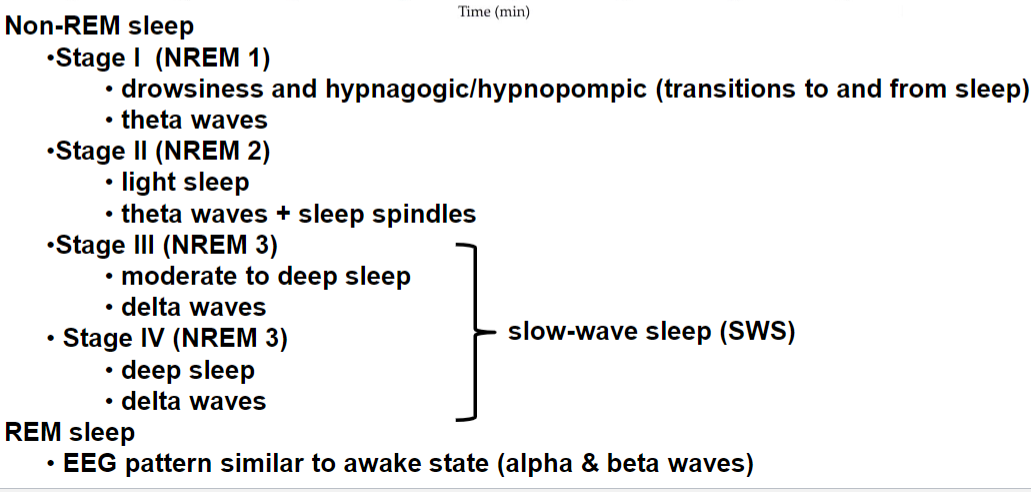
During Sleep
Initial descent into slow-wave sleep
Rapid ascent into REM sleep
Rapid descent into slow-wave sleep
Repeat ~4 times
As the night progresses, duration of slow wave sleep shortens while duration of REM sleep increases
Characteristics of REM sleep
Rapid eye movement
REM atonia: paralysis of large muscle groups (except diaphragm &
extraocular mm.) and twitching of small muscles
Pulse and respiration reach waking levels
Sexual arousal
Ascending reticular activating system
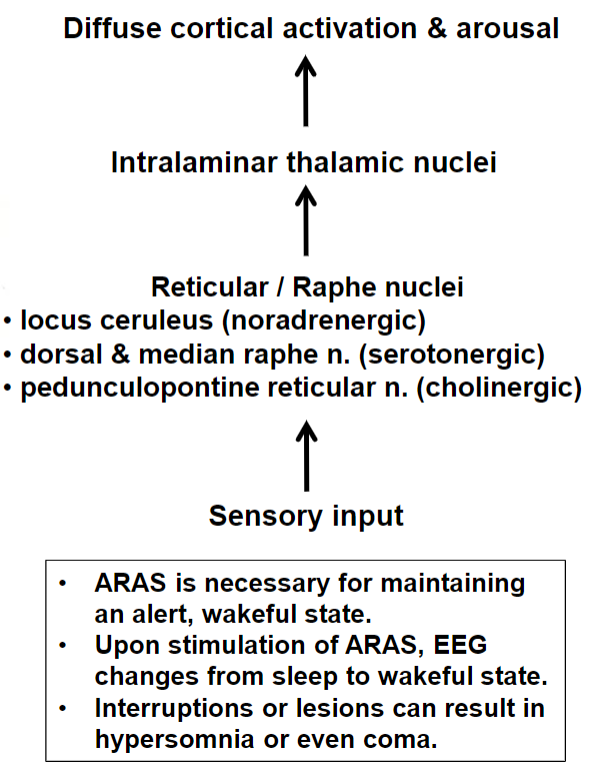


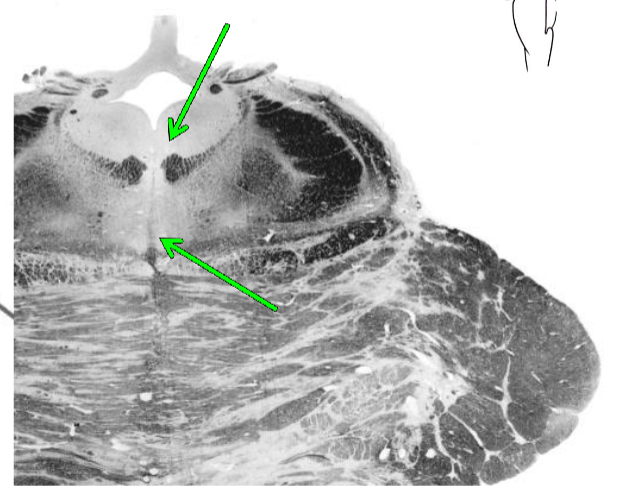

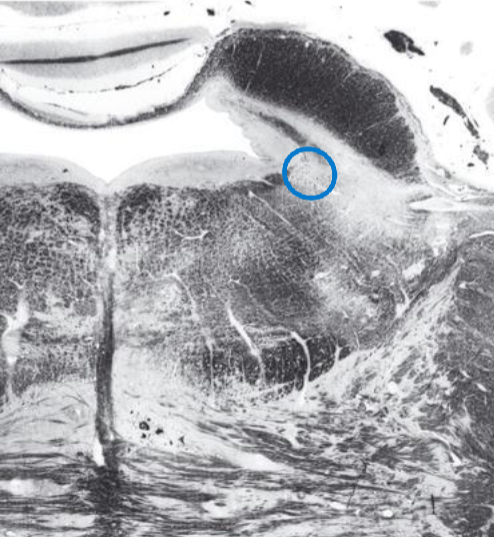

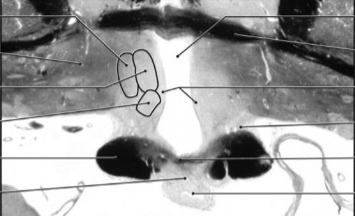
Lateral hypothalamic n
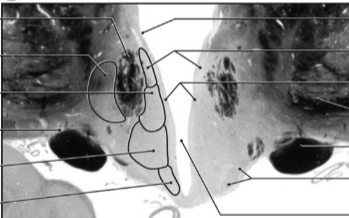
Lateral hypothalamic n
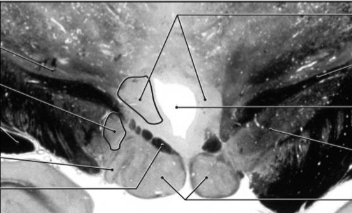
Lateral hypothalamic n
Lateral hypothalamic n
small population of cells produce orexin (hypocretin)
active during wakefulness
stimulates tuberomammillary n.
suppressed during SWS & REM
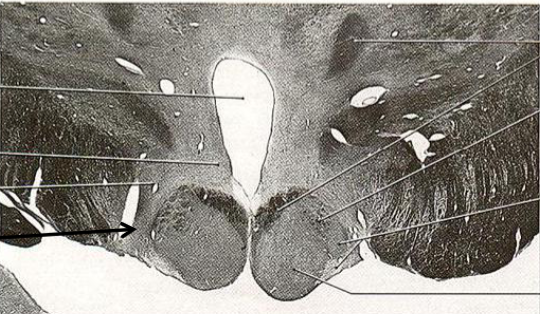
Lateral hypothalamic n
Tuberomammillary n
Tuberomammillary n
source of histaminergic projections
stimulated by orexin-producing neurons of the lateral hypothalamic n.
active during wakefulness
suppressed during SWS & REM
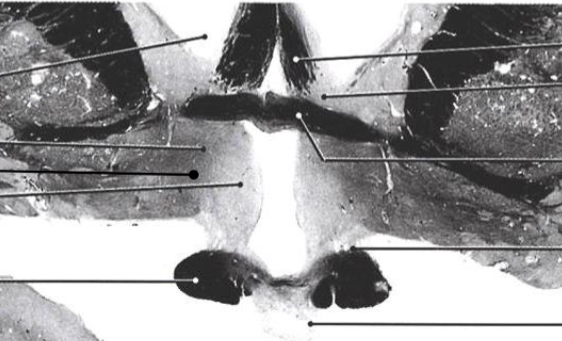
Ventrolateral preoptic n
Ventrolateral preoptic n
GABA-ergic
inactive during wakefulness
active during all stages of sleep
initiates the sleep cycle by suppressing the ARAS and TMN
Initiation of Sleep
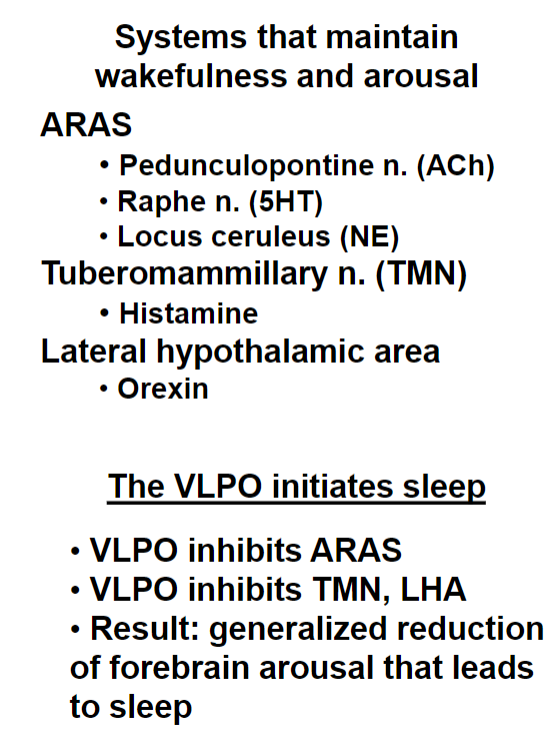
Narcolepsy
REM sleep attacks: individual enters REM sleep directly
Cataplexy: sudden loss of muscle tone
Human narcolepsy: autoimmune destruction of orexin-producing neurons in the lateral hypothalamic nuclei
REM cycles: The Reciprocal Interaction Model
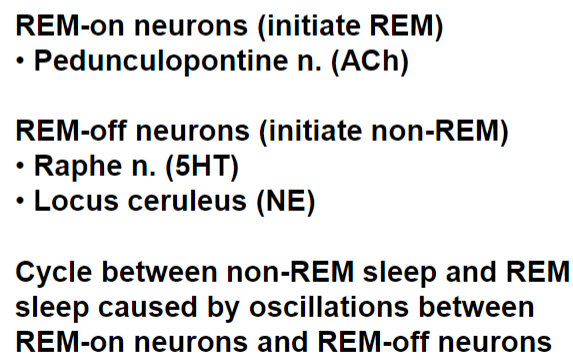
Dreaming
primarily during REM sleep
Dreaming may occur near the onset of sleep (hypnagogic) or just prior to waking (hypnopompic)
Characteristics of REM dreams
intense emotions
bizarre/illogical content
rich sensory perception
uncritical acceptance
memory deficit (acquisition suppressed)
Increase in limbic activity, coupled with suppression of the dlPFC, may explain the emotionality of REM dreams and our acceptance of their illogical content
REM atonia

Binocular Rivalry
When a particular stimulus is presented to one eye while a discordant stimulus is presented to the other, the visual perception is of either one stimulus
or the other, alternating every few seconds, with only transient blending of both eyes’ view
The activity of neurons in visual association cortex can be associated with a preferred stimulus
The fusiform face area (FFA) becomes active when perception shifts to faces
The parahippocampal place area (PPA) becomes active when perception shifts to houses
Activation of dlPFC and parietal association cortex are correlated with shifts in perception for a variety of
visual rivalry tasks- executive-cognitive
control of perception
Attentional Blink
Attentional blink refers to a deficit in
reporting a second target
Due to attentional (not sensory) limitations b/c blink does not occur when subjects ignore T1
While Target 1 and Target 2 both elicit the same early EEG response, a late-stage “P3” component is present only when the subject successfully perceives Target 2
The P3 activity consists of prefrontal association cortex (P3a) followed by parietal association cortex (P3b)
The P3 component is thought to represent the neural process by which selective attention brings a target into conscious awareness
Consciousness
Coordinated activity of frontal and parietal association allows stimuli to reach conscious awareness
Frontoparietal “filter” provides coherent, seamless experience of the world
Forms part of the central-executive network of cognition
Anti-reductionist/Integrated
Information Theory- Consciousness is not reducible to (cannot be entirely explained by) the physical workings of the brain
Reductionist/Computational-
functionalist hypothesis- Consciousness can be reducible to (could be explained by) the physical workings of the brain; Monism: the brain and the mind are a singular phenomenon